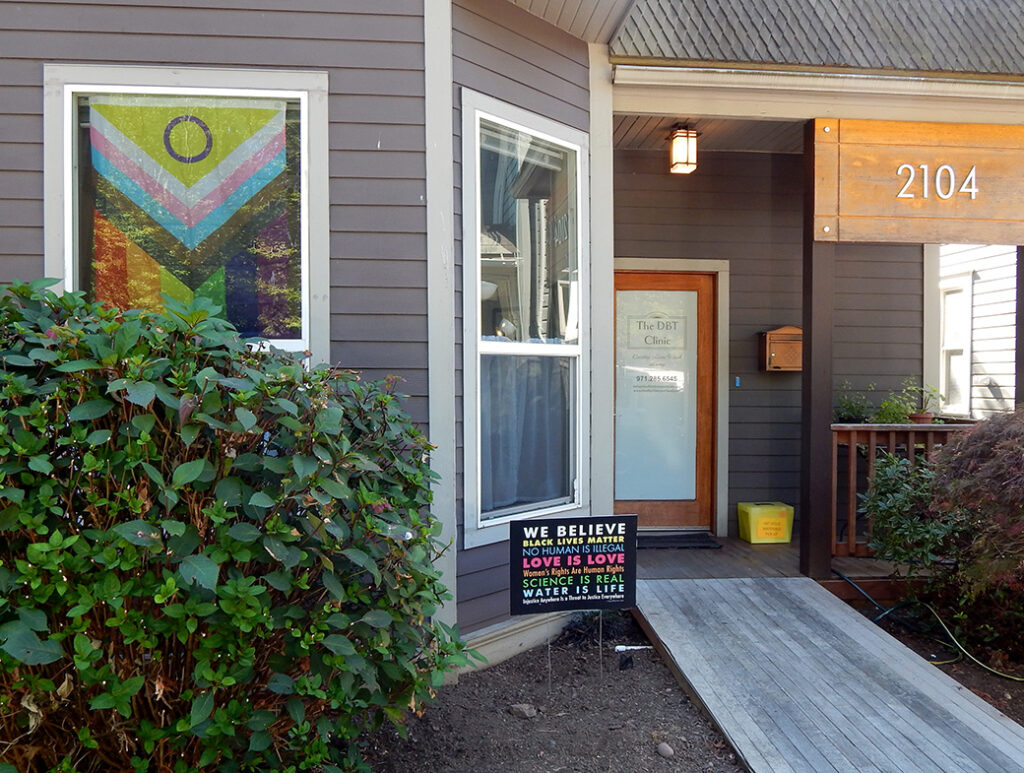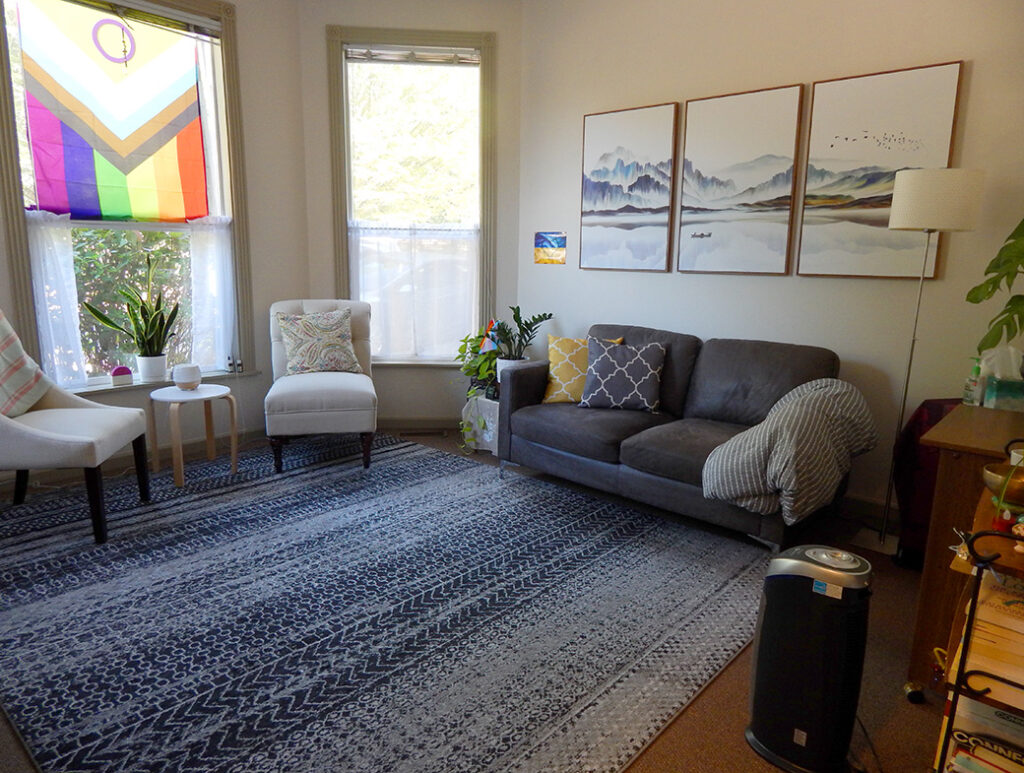About Our Clinic
We are dedicated to providing treatment with compassion and professionalism in a safe environment.
We come to where you hurt, and let you know you are not alone.
The DBT Clinic was founded in 2010. We are committed to using Dialectical Behavior Therapy (DBT), supported by other modalities, to help people alleviate suffering and build lives worth living.
What is DBT?
Dialectical Behavior Therapy (DBT) is an evidence-based therapy that promotes skills in mindfulness, impulse control, emotion management and interpersonal effectiveness.
Our Mission
We are dedicated to providing treatment with compassion and professionalism in a safe environment. As clinicians, we are formally trained within a Western psychological tradition. While we value the knowledge in that system, we also understand its significant historical problems and limitations. The DBT Clinic staff and clinicians continually work to unlearn cultural racism, sexism, homophobia, systemized perspectives, and silencing. Toward that end we:
- work to establish an environment that is free from emotional and physical harm
- expand our knowledge and understanding through regular and on-going trainings
- commit to learning, growing, challenging and supporting each other in our advocacy
- scrutinize all policies and procedures on a regular basis
- strive towards an equitable experience, providing each person the resources and opportunities to serve the needs of our clients and staff as defined by them
Our administration is dedicated to building a diverse staff which reflects our community by enacting anti-racist, anti-ageist, anti-ableist, anti-heteronormative, and anti-sexist hiring and retention practices. Please refer to our Policies for a detailed list of action items.




The DBT Clinic of Portland stands in solidarity with the fight for racial equality.
We continually scrutinize our company’s policies, procedures, and hiring practices. We are in the process of developing plans of action spanning therapist and team education and training, creating an office environment and culture free of harm, and specific company practices, as we engage in regular and facilitated conversations about therapeutic decolonization through as intersectional a lens as possible. In this way, we continually evolve to be able to best advocate for every member of Oregon’s many and diverse communities, supporting each of them in pursuit of their mental health goals.
Therapist Consultation
Therapy for the therapist.
Therapist consultation is an essential element in DBT therapy. The therapist is meeting weekly with other DBT therapists to discuss cases and get support for doing this kind of work. We call it “therapy for the therapist.”
Sometimes, in this model of therapy, the therapist might get rewarded by clients for veering away from the model of treatment and punished for adhering to it. Weekly consultation helps us stay faithful to the treatment model and provides us the support needed to work with a “higher risk” population.
Research on this part of the therapy shows that client drop out rates become much higher when the therapist is not attending a consultation group.
The Japanese Art of Kintsugi
Here at The DBT Clinic, we don’t believe you’re broken, but understand that’s how you may feel from time to time. Together we can work on repair, and building back a life that is more valuable and enjoyable. The entirety of you, flaws, cracks and all, make you unique and special. We welcome you to embrace all pieces of yourself, and work towards a life worth living.
Author Terushi Sho, from the BBC
Kintsugi, Meaning “joining with gold”, this centuries-old art is more than an aesthetic. For the Japanese, it’s part of a broader philosophy of embracing the beauty of human flaws.
Most people don’t purposefully shatter their cherished pieces of pottery, but that isn’t always the case in Japanese culture. Adorning broken ceramics with a lacquer mixed with powdered gold is part of a more than 500-year-old Japanese tradition that highlights imperfections rather than hiding them. This not only teaches calm when a cherished piece of pottery breaks; it is a reminder of the beauty of human fragility as well.
In a world that so often prizes youth, perfection and excess, embracing the old and battered may seem strange. But the 15th-Century practice of kintsugi, meaning “to join with gold”, is a reminder to stay optimistic when things fall apart and to celebrate the flaws and missteps of life.
The kintsugi technique is an extension of the Japanese philosophy of wabi-sabi, which sees beauty in the incomplete and value in simplicity. The broken pieces’ gilded restoration usually takes up to three months, as the fragments are carefully glued together with the sap of an indigenous Japanese tree, left to dry for a few weeks and then adorned with gold running along its cracks.In an age of mass production and quick disposal, learning to accept and celebrate scars and flaws is a powerful lesson in humanity and sustainability.
